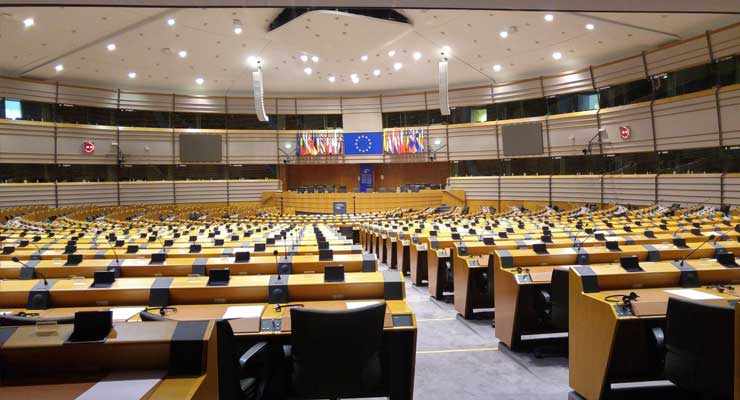
From Voice Of America
It is almost four years since British lawmaker Jo Cox was shot and stabbed to death by a 52-year-old assailant outside a library in her normally placid northern England constituency. Her killer had a history of psychiatric problems and ties to a U.S.-based neo-Nazi group.
As he shot and skewered her, he shouted, “Britain First.”
The murder was seen as an aberration in modern British politics — she was the first British MP to be killed in office since 1990, when a senior Conservative died in an IRA car bombing. But since her death there’s been a surge in British parliamentarians being targeted by both far-right and far-left militants for intimidation and threats, often delivered via social-media platforms, but also in face-to-face encounters.
That was caught dramatically on film last month when a woman MP, Anna Soubry, was filmed being harassed by a group of mainly male protesters a she walked towards the British parliament.
Female lawmakers appear to be singled especially for vile abuse and aggressive trolling. Describing threats to lawmakers as “a burgeoning phenomenon,” the House of Commons Speaker John Bercow warned this week that allowing intimidation to continue would be the “death of democracy,” and he called on police and the government to do more to combat bigots.
With a series of important Brexit-related votes scheduled for next week, he mainly focused his remarks on Brexit extremists, but he warned more widely about a growing trend of political intimidation.
“What seems to have happened is people who violently disapprove of the opinion of an MP think it’s somehow proper to write in quite the most horrific and obnoxious terms, to post blogs on the matter, to Tweet in the most offensive terms, and either in person to threaten or worse still to inflict violence,” he said.
Rising political tensions have forced female lawmakers to move home and hire bodyguards after being targeted by extremists, according to an investigation last month by The Times. The newspaper reported that some senior women parliamentarians have even been bullied into switching their votes on major issues or out of fear that if they don’t, they may face violent repercussions.
Britain isn’t the only country in Europe seeing lawmakers targeted for venom and violence.
In neighboring France, there’s been an uptick since the emergence three months ago of the Yellow Vest protest movement, which analysts say has been increasingly infiltrated by ultra-leftist and far-right anger-mongers, giving it a much harder edge than when it began as a mainly rural agitation against fuel-tax hikes.
Last month, the constituency home of the speaker of the National Assembly, Richard Ferrand, was firebombed. The constituency office in Le Mans of a national lawmaker from French President Emmanuel Macron’s ruling party was destroyed. And lawmakers from mainstream parties say they’re experiencing a rise in crude threats and intimidation.
It is a complaint heard across the Continent.
In Italy last year during the campaign for national elections, rising political violence and street skirmishing between leftists and right-wing factions prompted fearful comparisons to the 1970s and early 1980s — the “Years of Lead,” as they were known — when the country was engulfed in turmoil and buffeted by domestic terrorism mounted by extremists on right and left of the political spectrum.
Political violence plunged the center of the coastal city of Pisa into chaos and sent shoppers scurrying as ultra-leftists mounted a violent demonstration against Lega leader Matteo Salvini, now the country’s joint deputy prime minister, who was speaking at a public rally and repeating his pledge to fight Brussels to ensure that “Italians come first.” Protesters threw smoke bombs, stones and bottles at blue-helmeted riot police.
Europe’s current climate of hate is reminiscent of the 1930s, say some analysts. Jean Garrigues, a history professor at Paris’ Sciences Po university, argues “one of the main takeaways from the Yellow Vest movement is the impression that many believe they’re not given enough consideration by discredited political elites.”
Marxist-based historians point to another period of violent politics even further back in European history between 1780 to 1832, especially in Britain, with the rise of organized working-class movements frustrated with the denial of aspirations and angry at the conspicuous prosperity of social superiors.
Historical comparisons aside, social-media is seen by many commentators as being a factor fueling rage and violence and becoming a delivery-system for intimidation, adding to the shrillness and upping the stakes. Some politicians — especially from the populist fringes — are to blame as well, say analysts, by failing to restrain their own rhetoric and hurling accusations with abandon at their rivals and alleging treachery.
The political language, though, is matching the grim, polarized tribal mood of European electorates still buffeted by the consequences of the 2008 global financial crash and furious with political systems seemingly incapable of solving key bread-and-butter economic and social issues.
Veteran lawmaker Harriet Harman, a centrist member of Britain’s main Labour opposition party, worries that the anger and abuse is just further polarizing politics, making it harder to agree to solutions for the big challenges facing Europe. And the intimidation and targeting of lawmakers adds to the danger, by making them more remote from voters and hindering them from speaking their minds. “What is at stake here is not just people’s safety but democracy — the victim here is not just the MP but also our democracy,” she has warned.
Leave a Reply